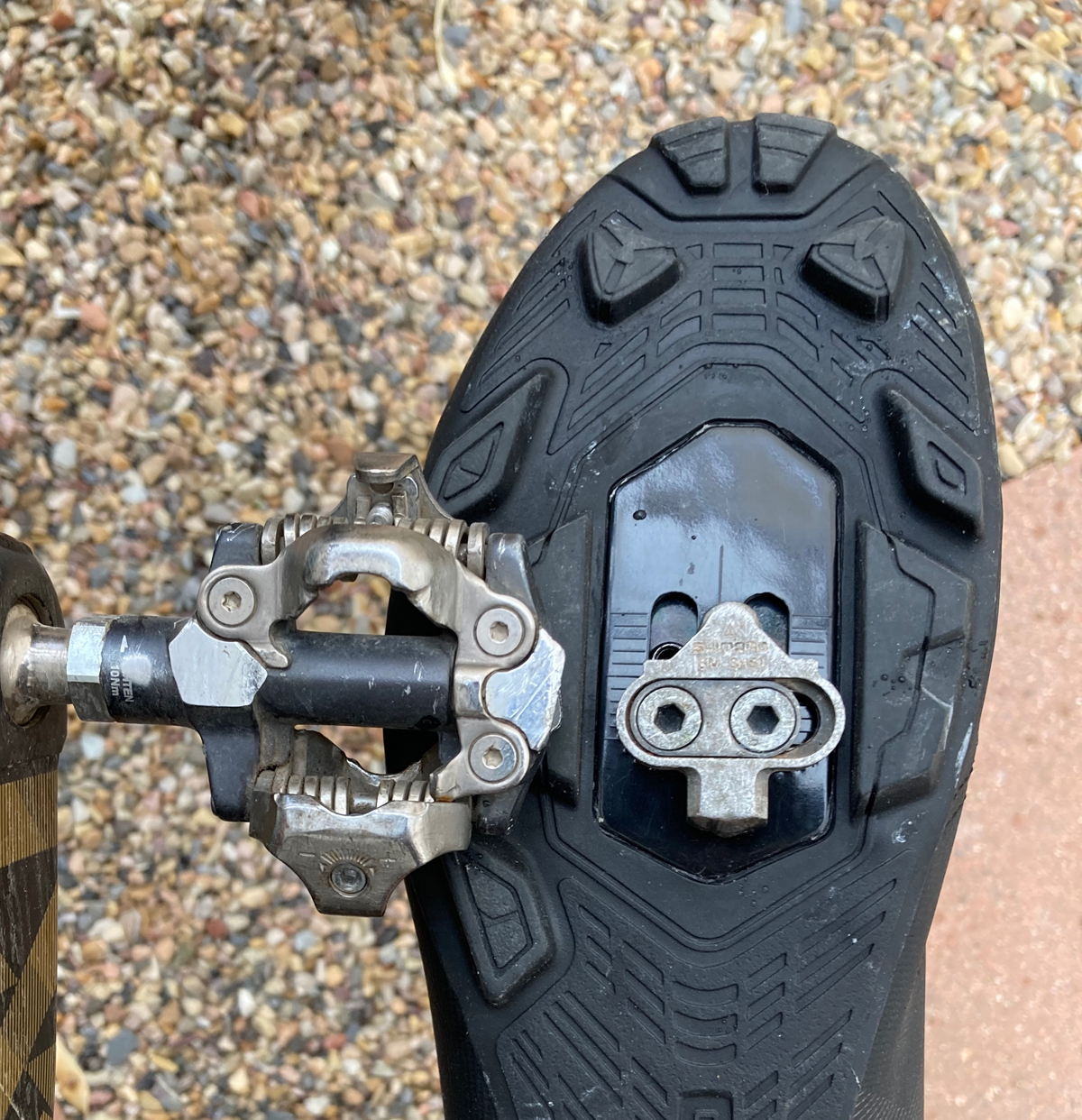By Tom Jow — If you are reading this, you probably ride a bike. Therefore, you likely already have pedals, unless you’re doing the toddler Strider thing. So, what more could I possibly tell you about pedals? What if I told you that switching from flats to clips, or vice-versa might improve your riding? Or at least pedaling. (Roadies using clips, your mind is generally already made up)

The Case for Cleats
Clip-in pedals (originally known as “clipless”, and still called that by roadies) for mountain bikes were introduced to the public in the early 1990’s. They were a huge improvement over the toe clip and strap pedals that racers were using at the time. Using a small cleat on the shoe and double-sided spring-loaded jaws on the pedal, this system allowed a solid connection to the pedal while allowing ease of dismount with the twist of the ankle.
Having the feet fixed to the pedals enables the rider to apply power to the pedals through almost the full 360 degrees of crank rotation. When “pedaling in circles” the foot presses down, pulls back at the bottom, pulls up on the back and then pushes forward over the top. Done well, the foot goes around in a smooth motion as if the foot were attached to the crank arm; it’s a very efficient way to pedal.
Being attached to the pedals also allows us to pedal in many different ways depending on how their legs feel. Maybe we want to pedal hard and mash up and down like pistons, or we can pedal “round”, applying power around as much of the circle as possible. Maybe we will feel like only pulling up on the backstroke (really it is more unweighting than “pulling”), in which case the other leg goes down automatically; using momentum as much as muscles. We can also be lazy and just let our feet do whatever.
Our pedaling is not only improved on smooth surfaces, but in the rough stuff as well. In fast terrain we can power through knowing our feet will confidently stay attached. For steep technical climbing we can put the power down knowing we can clip out if our momentum comes to a halt.

The Case for Flats
Platform pedals or “flats” are the easiest pedals to use. Our feet go on without having to clip in, and come off whenever we like, no twisting required. We can use any shoes. This makes it the easiest pedal for beginners. Improving and accomplished riders benefit from using flats as well. For example, it is easier to start in the middle of a steep climb or at the entry to a technical section. Because we can easily remove our feet, we can be more confident (or at least willing) to attempt to ride more technical terrain. We don’t have to be afraid of remaining attached to the bike in the event of a crash.
The Case for Shoes
While flat pedals can be ridden with any shoes, riding any significant distance is more comfortable and more efficient with cycling shoes. Bike shoes are designed with a stiff midsole to transfer power and to support the arch of the foot. In order to use clip-in pedals, the shoe must have special mounts in the sole for cleats.
Performance minded road riders will want road-specific shoes. These shoes are light and stiff but aren’t particularly good off the bike. Mountain bike clip shoes are a beefed-up version of road shoes with tread for walking in the dirt. For overall mountain riding and gravel, these are a good choice. Riders using flats should also use bike specific shoes. Shoes for flats will have a stiff midsole and sticky rubber soles for grip on the pedals.
There is not a right or wrong type of pedal to ride with. Yes, road and mountain bike cross-country racing are best served by clip-in pedals. Even top downhill World Cup racers use clips. However, thinking that we must use clips when serious pedaling is involved is a little closed-minded. Consider that in mountain bike enduro racing, where the riders have to pedal up to the start of the downhill, half of the podium finishers at the 2023 Maydena Enduro World Cup were on flats.
Conclusion
Each pedal does its own thing well. For riders wanting to improve, or just keep things fresh, changing pedals and/or shoes might be a good thing. Ultimately, however, he best pedal is the one that enables the rider to perform their best and have fun.







